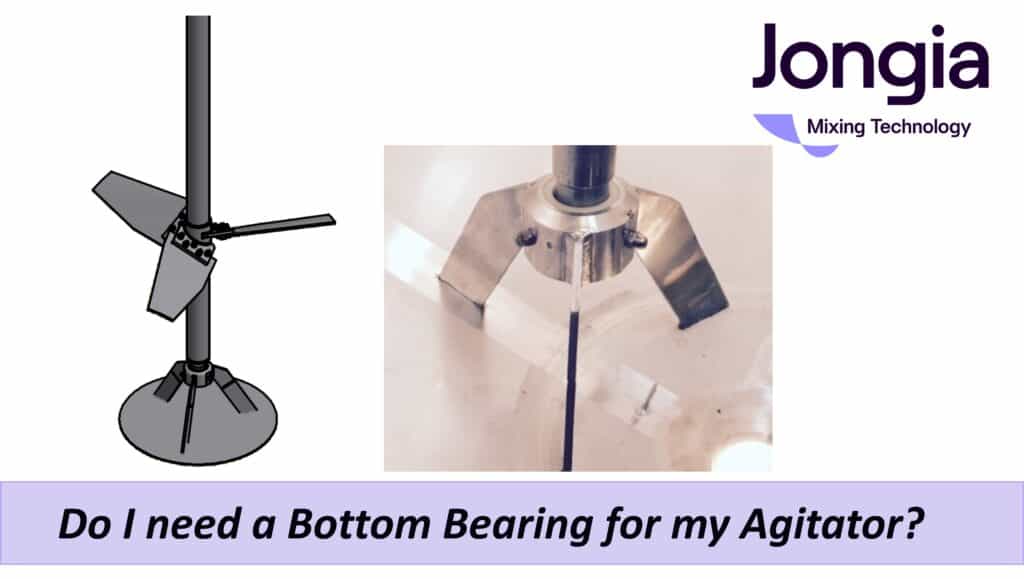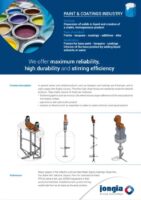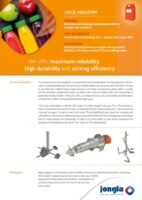Do I need a Bottom Bearing?
The installation of a bottom bearing is not mandatory. While it offers certain advantages, there are also drawbacks to consider. It is important to note that the bottom bearing functions more as a displacement limiter than as an actual (support) bearing. This is because it does not provide axial support, only radial support.
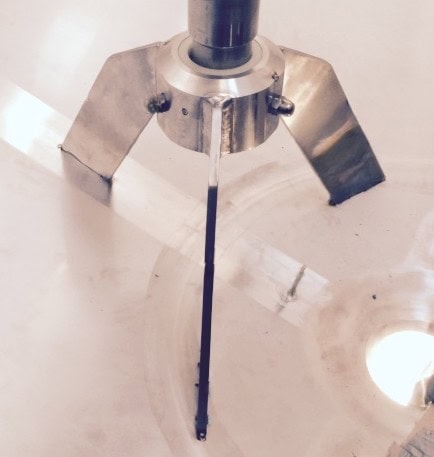
Advantages
- Displacement Limitation:
- In cases of fluctuating levels, the bottom bearing acts as a limiter, even if the agitator element moves through the liquid surface during level changes.
- Resonance Absorption:
- When operating at varying RPMs, resonance may occur. A bottom bearing helps absorb these vibrations.
- Reduced Load on the Tank Top:
- The bottom bearing absorbs part of the forces (excluding weight), reducing the load on the tank top.
- Lower Tank Construction:
- No bearing seat is required in the upper structure, resulting in a lower overall construction height on top of the tank.
- Lower Agitator Cost:
- The cost of the agitator is reduced due to fewer construction components.
Disadvantages
- Welding Inside the Tank:
- A bottom bearing must be welded inside the tank. This can only be done after the agitator is placed, both within the tank and after the tank itself has settled due to structural adjustments.
- Wear and Tear:
- Although contact between the wear bushing of the bottom bearing and the shaft pin is minimal, the bushing will eventually need to be replaced.
- Potential Contamination:
- Even with minimal wear, small particles of material may enter the medium inside the tank.
- Increased Load on the Tank Top:
- The agitator will require a reinforced bearing at the tank top to absorb axial forces. This results in:
- A slightly taller agitator,
- Increased forces on the tank top,
- A higher overall cost for the agitator.
- The agitator will require a reinforced bearing at the tank top to absorb axial forces. This results in:
- Hygiene Concerns:
- A bottom bearing is not ideal from a hygienic standpoint.

Impact on Eccentric Agitator Systems
For eccentric agitators equipped with both a bottom bearing and a residual stirrer, the sweeping effect of the residual stirrer is only partially achieved.
- The residual stirrer, which follows the tank’s conical bottom, will have a greater distance from the tank’s opposite side due to its eccentric positioning.
- However, the primary function of the residual stirrer is pumping, which is designed based on the tank’s geometry.
- If a bottom bearing is installed, the residual stirrer’s shape is slightly adjusted to rotate around the bottom bearing.
- Despite this adjustment, the tip speed of the residual stirrer remains the same, ensuring that its pumping function remains unchanged.
Conclusion
Ultimately, the decision to install a bottom bearing depends on weighing these advantages and disadvantages. From a functional perspective, the agitator will perform well both with and without a bottom bearing. The choice should be based on factors such as structural considerations, maintenance requirements, and hygiene priorities
Contact our specialized team for all your questions

Tom Pruymboom
Sales Director
Area Worldwide

Bart Brouwer
Area Sales Manager
Area Worldwide
Related Articles
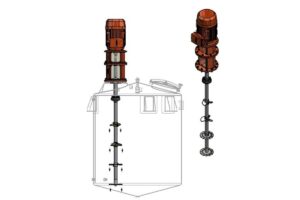
High-Speed Disperser Technology: The Engineering Behind Effective Mixing
A Technical Guide by Jongia Mixing Technology Core Function High-speed dispersers excel at three critical tasks: Fracturing powder agglomerates into

VVTI Biogas Tilburg
VTTI Biogas Tilburg is developing a new bio-energy facility, focusing on processing organic waste. The plant is expected to produce


